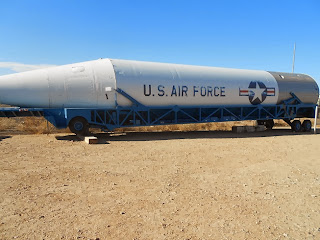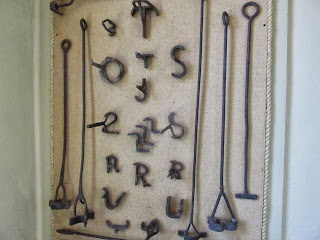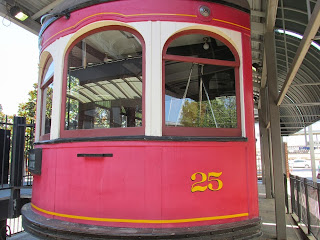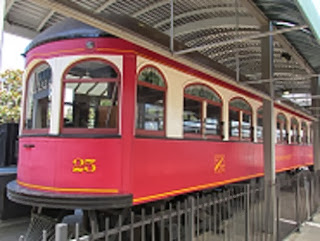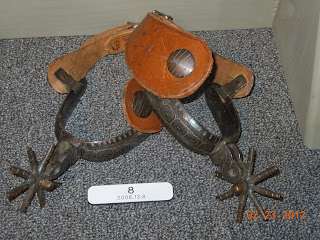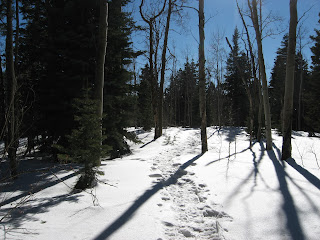 One of the most fun things when touring the western United States is visiting old train depots. While old train stations are today in a variety of conditions, many have been beautifully restored and turned into museums which tell the story of a community and the railroad that once passed through it. When touring one of these stations don't be too surprised to come across some fascinating model railroad exhibits.
One of the most fun things when touring the western United States is visiting old train depots. While old train stations are today in a variety of conditions, many have been beautifully restored and turned into museums which tell the story of a community and the railroad that once passed through it. When touring one of these stations don't be too surprised to come across some fascinating model railroad exhibits.Often we've come across model railroad layouts that recreate an old rail yard and it's buildings that at one time stood in the town but have been lost to the decades. These exhibits are in the greatest detail possible and have obviously taken a long time and a lot of work to create. They also show you what at one time was the heyday of the railroad industry and just how important the railroad was to many communities nationwide.
Below we've listed some of these railroad depot museums with a look at the type of displays you'll see.
Ennis Texas
Ennis Texas, established in 1872, is located about 35 miles south of Dallas along Interstate 45. The town, like many towns, was named after a railroad official. Cornelius Ennis was a railroad official with the Houston & Texas Central Railroad as well as the Houston Tap and Brazoria Railroad and one time mayor of Houston.
Here you will want to make a stop at the Ennis Railroad and Cultural Heritage Museum. Inside the museum is a railroad display showing the original Ennis rail yard. Also on display is a station master's office, railroad dining car china, local historic artifacts and photos and an amazing large glass case collection of vintage locomotives and rolling stock. If you love model railroads this is a display you don't want to miss seeing. The Ennis Railroad and Cultural Heritage Museum is aptly located near the rail tracks at 105 NE Main Street.
Belen New Mexico
Belen New Mexico is all about the history of the Atchison Topeka & Santa Fe Railroad. Belen is located about 36 miles south of Albuquerque along Interstate 25. The railroad museum with it's very large model railroad layout is located in the old Fred Harvey House Dining Room on the east side of town along the rail tracks.
Belen New Mexico, once a Spanish fort in the 1700's and later a town, to this day remains a busy railroad town being a major refueling and maintenance station for the BNSF railroad. The town is the site of the Belen Cut-off which connected Amarillo Texas to Belen beginning in 1907. The Belen Cut-off is a very busy route for freight traffic today connecting Belen to Clovis New Mexico on the Texas border.
The model railroad layout in the old Belen Harvey House is so large that it takes up three rooms. The model train and rail yard display was created by the Belen Model Railroad Club and if you're traveling in the area it's well worth the visit. The Belen Harvey House and Museum is located at 104 N. First Street.
Clovis New Mexico
Clovis New Mexico, like Belen, was and still is a very important railroad town. The AT & SF Railroad built the train depot and Clovis in 1907. This was part of the creation of the Belen Cut-off route.
The train station in Clovis not only handled passengers but also served as a division office for the railroad. Also, similar to Belen, Clovis sees about 100 trains pass through it daily. With increased rail traffic a Harvey House was also established in Clovis along the tracks.
The Clovis train depot now serves as a museum which includes an operating telegraph station along with a very impressive train layout and much more. There are four different railroad scale layouts inside the museum...two O scale layouts, a standard gauge layout, an N scale layout and an S scale layout. The Clovis Depot Model Train Museum is located at 221 West First Street.
Two additional Western Trips articles you may enjoy are on the links below...
The Famous Santa Fe 5000 Steam Locomotive which is the world's largest
Northern California's Niles Canyon Railway
In addition to the sites listed above, some very creative model railroad exhibits can also be found at the Frisco Heritage Museum in Frisco Texas, a northern Dallas suburb. This museum is also the new home for the Museum of the American Railroad, a very comprehensive exhibit of old locomotives and rolling stock once located in Dallas.
Another favorite is the San Diego Model Railroad Museum, covering 28,000 square feet, and which is the world's largest operating model railroad museum. This amazing model railroad museum is located at 1649 El Prado, San Diego, CA.
(Article and photos copyright 2013 Western Trips)








